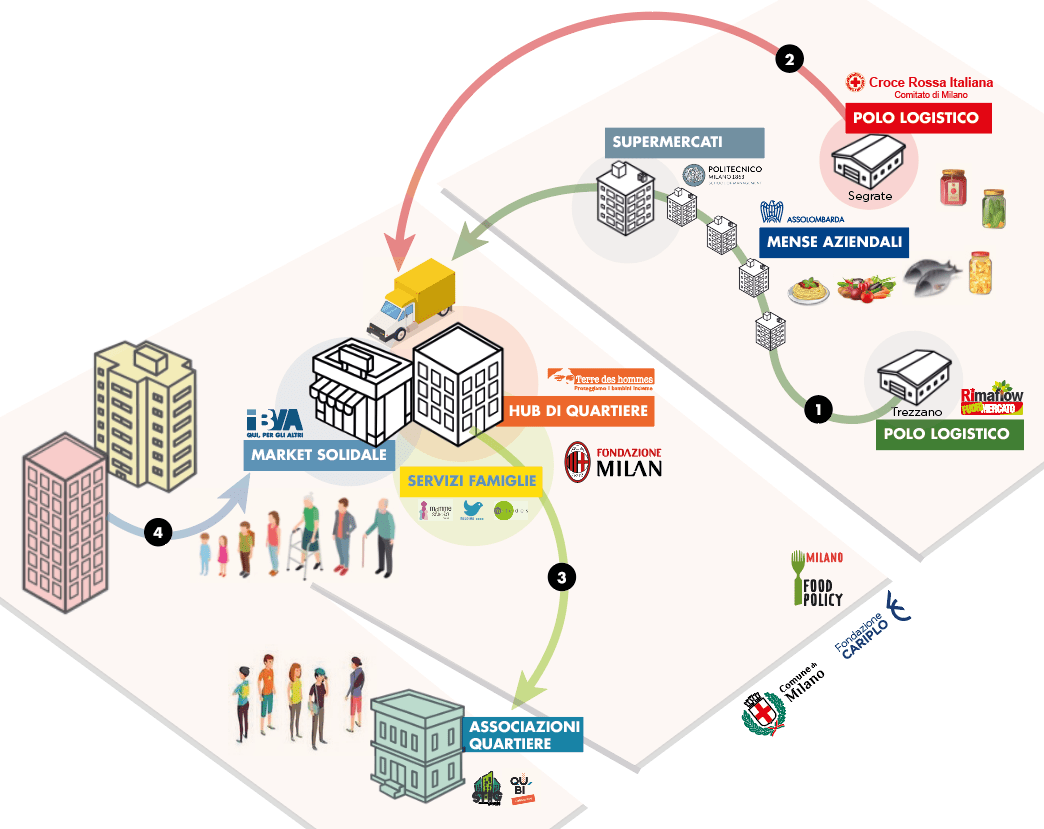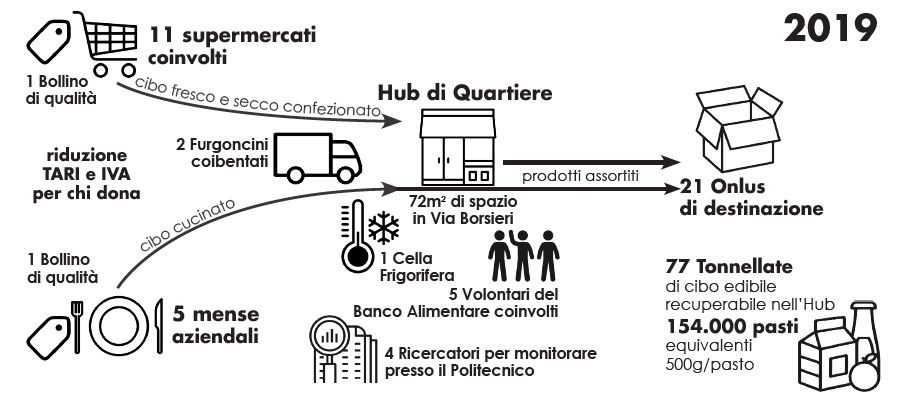
🇮🇹 Connected hubs fight food waste in Italy
A project in the city of Milan combat food waste and redistribute excess resources with innovative connected hubs.
Share this story!
Food is produced, consumed, and wasted at a dizzying speed in our world: about one-third of all food produced is wasted. The food industry is also responsible for about 25 percent of greenhouse gas emissions. Still, people starve and suffer from malnourishment in many parts of the planet.
An innovative project of the city of Milan aims to combat these problems, combining the reduction of food waste with redistribution to the ones most in need. The project creates an organized and centralized model based on the logic of giving, which involves supermarkets, companies, politics, universities, NGOs, and other associations.

The first steps to reduce food waste
With Expo Milano 2015, Food Policy 2030 was born: it's a series of initiatives to analyze city policies related to food, reduce waste by promoting responsible consumption, and direct food that would otherwise be wasted towards the neediest.
Actual actions against food waste officially began in 2019 with the first pilot model of the Hub Isola. The project was only possible thanks to the organized cooperation of several specialized players:
- The Municipality of Milan has identified and made available the various spaces
- The Polytechnic University of Milan designed the logistical-organizational model and analyzed the data
- Assolombarda involved multiple companies in the area
- Banco Alimentare della Lombardia carried out operational management on the model developed by the Politecnico
The pilot project made it possible to recover up to 77,000 tons of food per year – the equivalent of 154,000 meals.
An innovative logistic model
In the model designed, excess food is collected from supermarkets in the morning and company canteens in the afternoon. The companies involved benefit from a "Zero Waste" stamp and a reduction in the TARI tax of up to 20 percent, based on the food donated.

The collected food is transported in insulated vans to special local hubs, where it is stored on shelves or refrigerated. At this point, the donated food is distributed to non-profit organizations, NGOs.
Overcoming the method of direct contact between NGOs and supermarkets, this project presents itself as an innovative logistics chain, capable of promoting cooperation between all the parties involved in a win-win logic.
Thanks to this model, the collection of food becomes widespread and centralized, and the food is best preserved. The food collected, coming from various sources, is never a mono-product but always varied for a complete diet.
The pandemic: a fundamental test bench
This logistics model has been reworked for the "Food Aid Device" project, which started on March 16th, 2020. A centralized food collection network was created, where the donated food was collected in 10 temporary hubs and delivered to the most fragile and needy people.
In 15 weeks, over 20,700 people have been helped, making nearly 50,000 food deliveries.
A replicable and developing model
Between 2020 and 2021, the project was extended with the inauguration of two other hubs: Lambrate Hub and Gallaratese Hub. Two other Corvetto Hubs are in the start-up phase. A special "Zero Waste Hub" is also active at the fruit and vegetable market.
On October 17th Prince William awarded the city of Milan with the Earthshot Prize 2021 in the "Build a Waste Free-World" section, winning £1 million and the Royal Foundation support.
To date, each year, approximately 130 tons of food are recovered, the equivalent of 260,000 meals.
This is an interesting practical demonstration of the functioning of the neighborhood networks logic and the giving mechanism. It shows how only by cooperating and integrating the political and corporate logic it's possible to reach a supportive and respectful world.
By becoming a premium supporter, you help in the creation and sharing of fact-based optimistic news all over the world.


